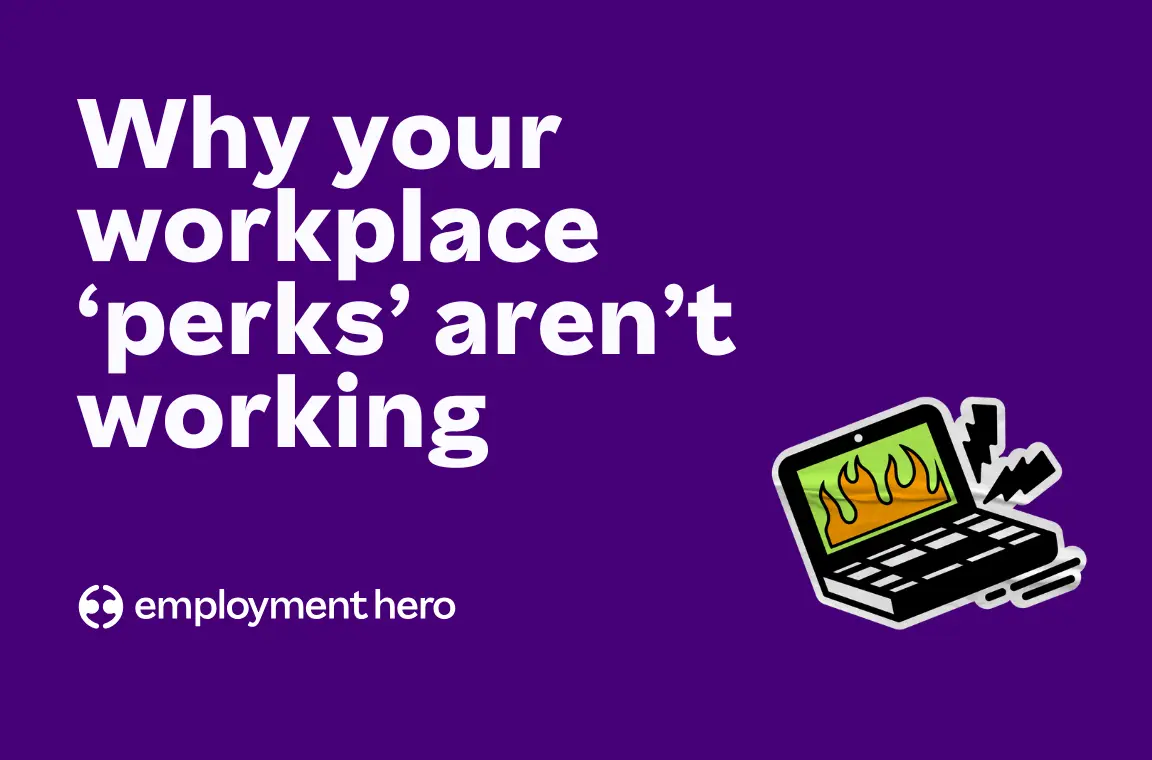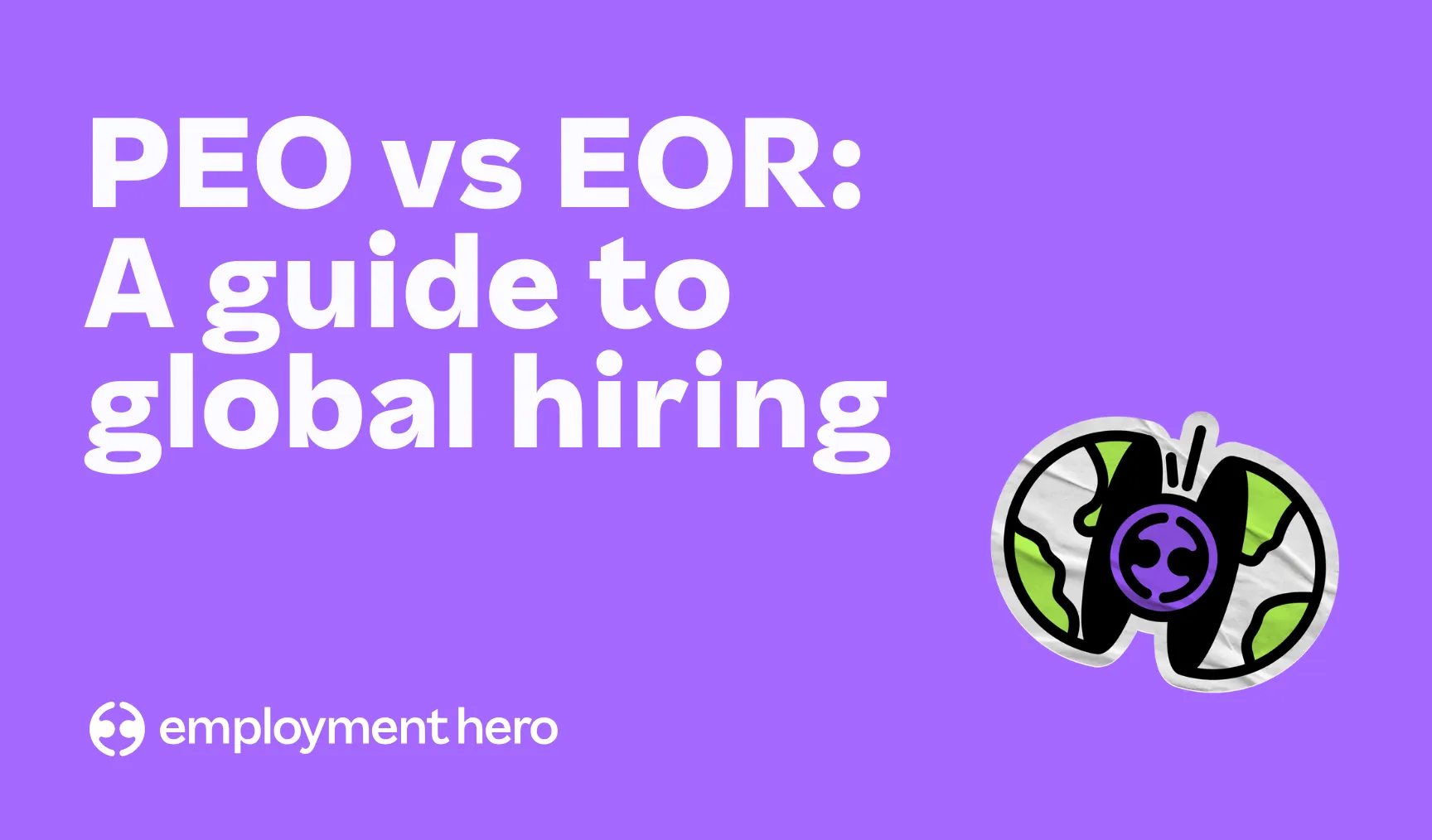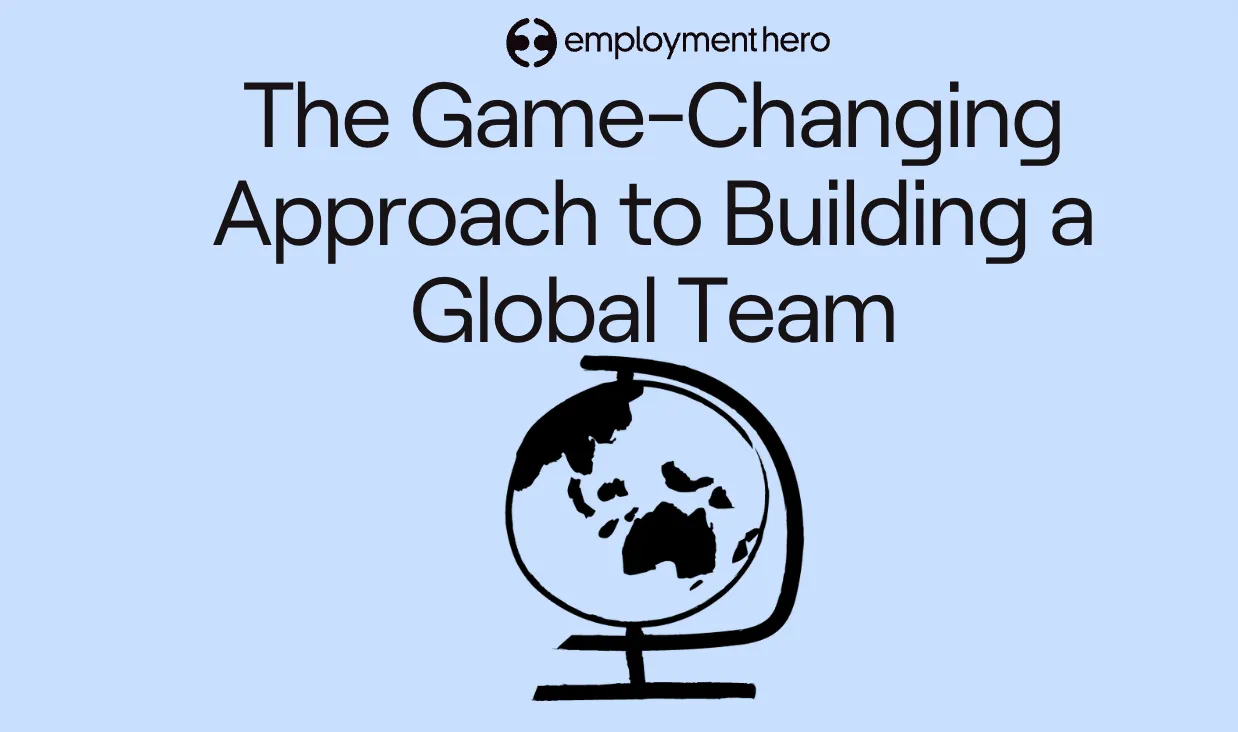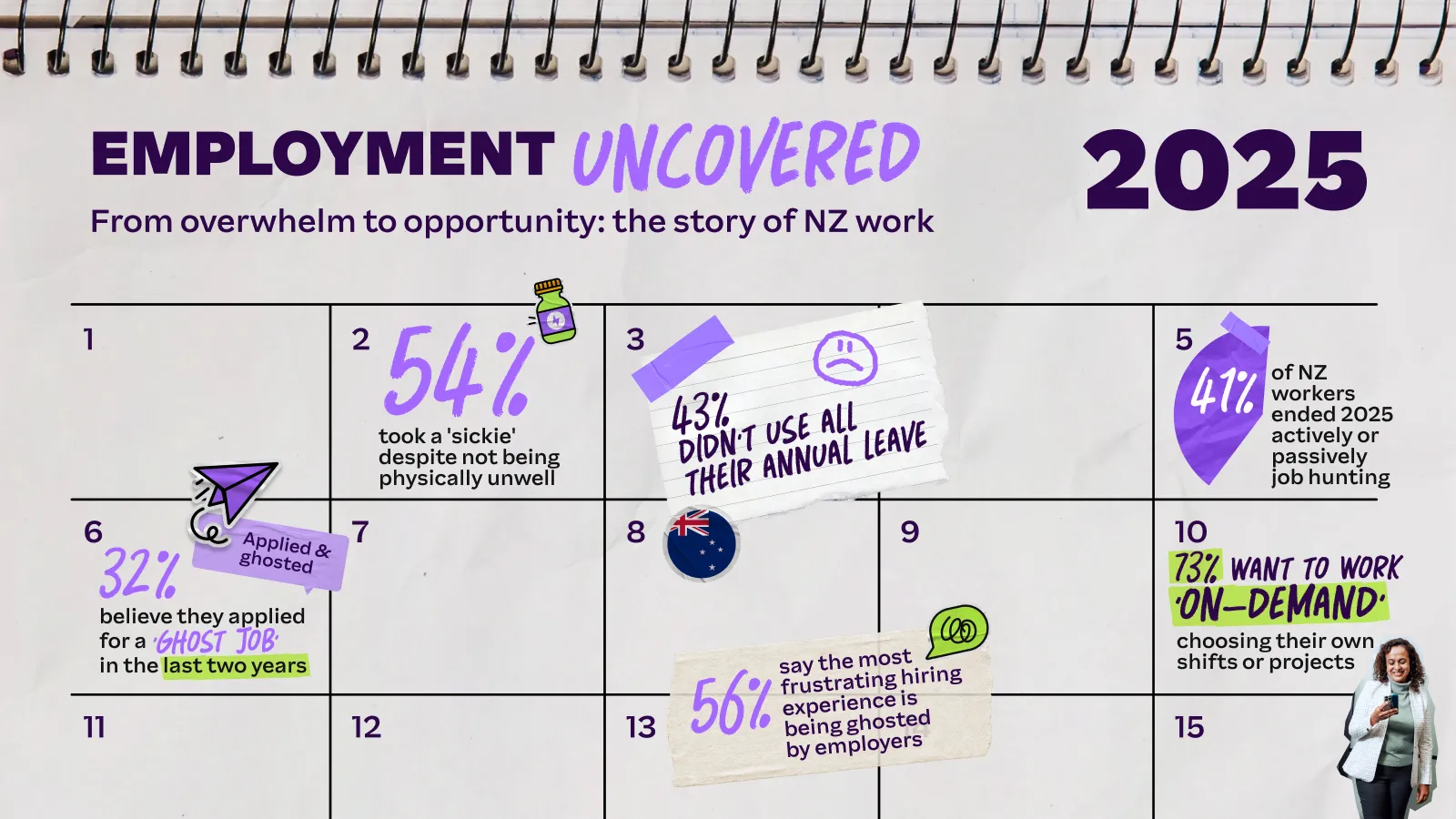Beyond morning teas and free fruit: Why your workplace ‘perks’ aren’t working
Thinking of ways to lift your team’s spirits? Before you hit ‘Order again’ on that next batch of cheese scones, here’s something you should consider.
-

Julia Boraston

Contents
Morning teas, free fruit, coffee shouts – on their own, they’re not going to build the kind of workplace culture that attracts and retains top performers. If your employees’ day-to-day experience at work is lacking, even the most generous perks will miss the mark.
Why? Because just like you, high performers want more than surface-level benefits. They want purpose and direction. They want to see a future for themselves in your business, and they want to feel like they belong.
Without the right foundations in place, the odd coffee shout just won’t cut it, and you’ll quickly see the impact on staff morale, productivity, attraction and retention. But that’s not to say building and maintaining a high performing team has to come with a big price tag. Quite the opposite.
In this post, we’ll unpack how to tell when perks aren’t working: and how to build something better without blowing your budget. Let’s get to it.
Culture isn’t a fridge full of freebies
Don’t get us wrong, we all love a few workplace freebies (choccy fish, anyone?). But if those sorts of perks are your only method to attracting candidates and keeping staff engaged, then you might have a problem.

Your culture is your competitive advantage. It’s what candidates will use to judge whether you’re a serious career move or just another job ad with buzzwords and banana bread.
Culture is what makes employees feel motivated by and committed to your business goals. A strong workplace culture has systems in place that encourage people to go beyond the bare minimum. Not just for the business, but for themselves and their colleagues too.
For larger employers, that might include performance-based rewards like commission or bonuses. But for many small to medium-sized businesses (SMEs) financial incentives aren’t always practical or sustainable. For that reason, it can be tempting to opt for low-investment gestures like free fruit, birthday cake or Friday drinks at your local.
Yes, these are great ways to show appreciation for your team. But they don’t build a culture that attracts and keeps top performers unless they’re part of a wider engagement strategy.
The bottom line? When you fail to invest in your workplace culture, your business will pay for it elsewhere.
What a shallow culture is costing you
Relying on perks like this to keep and attract top performers will quickly prove unfruitful. If you don’t put the right foundations in place to ensure your employees (and potential employees) feel valued, trusted and respected, it can manifest as disengagement, disinterest and apathy.

Unlike actively engaged team members who are aligned, enthusiastic, and driven to do their best, disengaged employees tend to do the bare minimum. They show little initiative and may mentally check out, even if they’re still showing up.
This mentality can quickly rub off on others, and before you know it, you have a culture based on a ‘bare minimum’ mentality that trickles throughout the business. The result? Managers get caught in a loop navigating HR issues instead of strategic work, productivity slows, people make mistakes more frequently, and customer complaints start to rise.
If you don’t adapt quickly, you may start to see:
- Top performers leaving sooner than you’d hope
- Hiring managers struggling to attract quality talent
- Increased spend on stop-gap solutions like temp staff
- Missed insights from front-line staff that could improve your product/service
- Managers miss compliance risks due to being bogged down in HR
If any of this sounds familiar, chances are your perks need attention. Let’s take a look at how you can course correct before it’s too late.
How to build a strong workplace culture that attracts and retains
If you’re looking at your free fruit bowl and starting to question everything…don’t worry. Keep your free fruit, just build something real around it. Here’s how.

Ask for feedback from your team
The best place to start is by asking your employees what they love about working for you beyond the odd freebie. Whether it’s your approach to career development, a flexible working policy or target-based incentives, the perks your existing team love should form the foundation of your employee value proposition (EVP).
From there, it’s a matter of ensuring your EVP is clearly articulated across your job ads, descriptions, career pages, and right throughout the hiring process. But don’t stop at the hiring stage: your EVP should be loud and clear throughout the entire employee lifecycle. That means regularly reminding your people of what attracted them to your business to begin with, whether you’re having a casual coffee catch up or a formal performance review.
Whatever your EVP looks like for your business, sharing it loudly and proudly is a great place to start.
Struggling to develop your EVP? You’ll find a step by step process in the Business Owner’s Guide to Top Talent.
Make recognition part of every day culture
You know that warm feeling you get when a customer or client leaves a 5-star review? That’s the impact a simple thank you can have on your employees. So, our first piece of advice? Say thank you (often and publicly) when someone is doing an outstanding job.

But this shouldn’t just be your responsibility, or your leaders. Everyone should have the opportunity to be recognised and be rewarded for great work by both colleagues and managers alike. Getting good feedback from a leader is great, but getting it from their peers can feel extra meaningful given how closely they work alongside them.
However you opt to encourage your team to celebrate their work, just make sure you draw attention to it both during the hiring process and beyond. Consistency is key.
It’s easy with the Employment Operating System
With a suite of built-in reward and recognition tools like Hero Points, the Company Shout-Outs feed, 360-Degree Feedback and more, the Employment OS makes recognising great work easy. It’s all the tools you’ll need to help the team feel heard and seen; and to motivate them to do the same for others.
Demonstrate clear pathways for development
When a top performer is considering joining a new workplace, they’re assessing you just as much as you are them. One thing in particular they’ll be looking for is understanding what processes you have in place to have them advance their career. Not just while they’re with you, but beyond, too.

It may be that they’re looking to move up the ranks in their next role or perhaps they’re hoping to upskill in another area. If you can show that you’ll support them to get there, you’re already miles ahead of the competition.
Nailing this part starts at the very beginning of the employee lifecycle and should continue throughout:
- State in your job ads and career pages how you support career development
- During interviews and onboarding, talk to each candidate about their career aspirations and how you might be able to help them get there.
- Make learning and career development a permanent agenda item for each of their 1:1s with their manager.
- Hold regular performance reviews
Did you know?
A learning management system is built into our Employment Operating System. Make training new starters a breeze, and easily upskill existing team members with customisable training modules, free learning resources and more.
Provide mental health and wellbeing support
We’re all human, and sometimes, life can get on top of us. When work stressors and personal stress start to take a toll, staff need to feel supported. It may be that you offer a special type of wellness leave, free or partly funded gym memberships or counselling services, or something in between. Whatever you choose, just make sure your staff are aware of how they can access it, and where they can go for more support.
Tip: Establishing an EAP service is a strong way to demonstrate support for your team. We partner with EAP provider, Clearhead, so that your people can access counselling and support when they need it most.
Get the basics right: pay, leave, and HR admin
Strong workplace culture isn’t just about motivating staff with recognition and rewards. It’s also about removing friction from your employees’ day-to-day lives. When daily tasks and HR processes are slow, unclear or unhelpful, staff can quickly start to feel unsupported.
Nothing breaks trust faster than payroll problems. Staff should be able to access payslips and tax details without having to chase someone down, and they should feel confident that they’ll be paid on time, every time.
From submitting leave and reviewing policies to completing timesheets and beyond, employees should be able to manage their own employment paperwork when it suits them, whether that’s from their laptop or phone.
Psst, we have an app for that. With the Employment Hero Work App, your team can manage key HR tasks like leave, rosters, timesheets and policies from their phone, anytime.
Don’t stop at perks. Build a culture they’ll stay for
This isn’t about ditching what makes your business feel personal, local or human. It’s about building the depth that makes people want to stay.
Depth comes from investing in the tools you need to be able to recognise good work, support your team’s career development, and make working for you feel easy.
That’s where our Employment Operating System comes in. Whether it’s recognising great work, supporting career development, simplifying onboarding, streamlining leave and payroll, or delivering user-friendly learning; it’s all built in and ready for businesses like yours.
Because when you get the foundations right, the perks actually mean something and the right people will want to be part of it. Ready to see for yourself? Book a demo.
Frequently Asked Questions
Workplace culture is the shared values, behaviours, systems and practices that shape what it feels like to work in your business. It shows up in everything from how decisions are made to how feedback is given, and whether your team feels safe, seen and supported. It’s not just what you say you value. It’s how your people experience working for you every day.
You don’t need a big budget or a dedicated HR team to build a strong culture. For SMEs, it’s about being intentional with the resources you have. That means putting simple systems in place to recognise good work, support development, promote flexibility and streamline admin. Most importantly, it’s about consistency. What you say and what your employees experience should always match.
Everyone contributes to culture, but it starts with leadership. That includes founders, business owners, team leads and managers. Leaders are responsible for setting expectations, modelling values and creating the systems and environment that help culture take root across the business.
Your culture should be visible in your job ads, your careers page, your onboarding process and the way you show up in interviews. Talk about your flexible work policies, recognition programs, and development opportunities. Use language that reflects your values, and share real stories or testimonials from your team. Candidates will notice when the inside matches the outside.
Employment Hero helps you deliver a consistent, people-first experience across every stage of the employee lifecycle. You can post jobs directly to leading job boards, streamline onboarding, and embed your values into everyday operations through tools for performance management, peer recognition, learning and more. It’s all part of our all-in-one Employment Operating System.
Book a demo to see how the Employment Operating System can help you simplify hiring, strengthen culture and scale your impact.
Related Resources
-
 Read more: PEO vs. EOR: A guide to global hiring
Read more: PEO vs. EOR: A guide to global hiringPEO vs. EOR: A guide to global hiring
Learn the key differences between a PEO and an EOR. Discover why an EOR is the smarter, safer way to…
-
 Read more: How to build a global team without a local entity
Read more: How to build a global team without a local entityHow to build a global team without a local entity
Learn how to streamline your hiring and expand your NZ business globally with an Employer of Record (EOR) without the…
-
 Read more: Employment Uncovered: Inside the Story of New Zealand Work in 2025
Read more: Employment Uncovered: Inside the Story of New Zealand Work in 2025Employment Uncovered: Inside the Story of New Zealand Work in 2025
Inside the story of NZ work in 2025. From rising ‘sickies’ to hiring fatigue, see how Kiwi work patterns are…





















